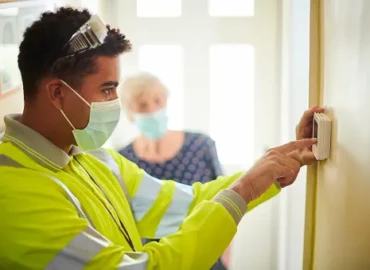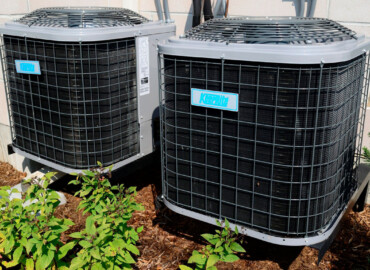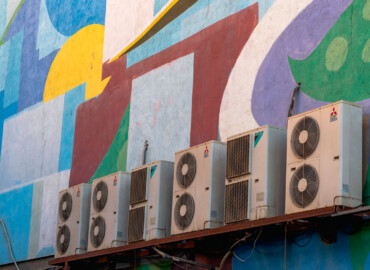7 Furnace Parts that Usually Break
In most homes, the furnace is the primary source of central heat. It works by pumping hot air into the home’s various rooms. The most common type of furnace is gas-powered. This type of central air system works by heating air and subsequently distributing it throughout the home through a network of vents and ducts. Other furnace types may also be powered by liquified petroleum gas, fuel oil, or in rare instances, it may also work with coal or wood.
Needless to say, if your furnace breaks it’s not only a major inconvenience and a potentially expensive repair. It can also be a huge safety issue if it happens during the frigid winter months, leaving your family without access to heating. This means that not only will your family be exposed to harsh winter temperatures, but it also risks damage to your home, including pipes freezing. If something appears wrong with your furnace, it’s important to consult a professional as soon as possible who can diagnose the issue and take steps to fix your furnace.
While you may not be able to fix a furnace yourself without consulting professional help, taking preventative steps to avoid the deterioration of your furnace is important. Doing so, can save you time and money in the long term. Therefore, understanding the furnace parts that are most likely to break is a crucial starting point so you can take steps to improve the lifespan of your furnace and its components.
Here is a list of furnace parts most likely to break
The Control Board
The control board is one of the most important parts of the furnace. It’s responsible for a variety of activities, including starting the electronic ignition, activating the blower, and shutting off the gas, amongst many things.
If the control board is having functional problems, it may prevent the furnace from being able to read the thermostat, therefore failing to heat the house adequately or at all. The control board can become damaged due to a variety of reasons, including failed solder connections, thermal expansion, stuck switches, or even as a result of power surges.
The Thermostat
While it may appear as though the control board is having issues, another potential problem is the thermostat. This component is crucial to your HVAC system as it measures the current temperature of the air, thereby signaling to the furnace how much warm air it should blow to reach the desired temperature.
The first thing to do is to check the batteries, which may simply need to be replaced. It could also be acting up due to a blown fuse. However, in other cases, there could be a build-up of debris and dirt. Make sure to turn off the thermostat breaker, remove the top, and then proceed to safely clean the area.
Other issues with the thermostat may include faulty wiring, mismatched components, or heat anticipator issues. If the aforementioned steps don’t fix your thermostat, consult a professional.
Ventilation System
If the air filter of your furnace’s ventilation system is dirty or blocked, it will prevent the warm air from successfully moving throughout the home, causing issues with heating.
Luckily, fixing this issue can be as easy as replacing the air filter if it’s full. In fact, you should be regularly changing the filter for this very reason. However, if this doesn’t do the trick, take a look at the exterior of the ducts and vents. Ensure the ducts are properly secured and clarify that nothing is blocking the air from escaping the vents.
Evaporator Coil
The evaporator coil is important as it absorbs the air in your home. Similar to the air filter, the evaporator coil can become plugged, especially if the filter hasn’t been changed recently. The best way to fix this is to change the filter as soon as possible. However, in other cases, the evaporator coil may leak, which may signal that the entire component needs to be replaced. Unless you have knowledge of how to do this yourself, consult a professional.
The Ignitor
When the thermostat signals to the furnace to start, the ignitor will create a spark that subsequently ignites the gas connected to the heater. Without a properly working ignitor, however, the furnace will be unable to blow warm air. There are several reasons your ignitor may not be working. It could have deteriorated with age, it may be an incompatible component, or have a bad limiter switch. Similarly, it may have been damaged in a power surge.
Gas Valve
As its name suggests, the gas valve is responsible for opening and closing to allow the flow of gas to the pilot light and burners, making it a crucial part of your HVAC system. Many times, a gas valve will become problematic due to years of usage. In most cases, it’ll require a professional’s official diagnosis.
However, in order to prevent the gas valve from unexpectedly having issues, it’s important to have regular furnace tune-ups, especially before heading into the winter months. This will ensure that your furnace is in its best working condition, and if not, a professional can fix the problem before it becomes an emergency.
The Furnace Blower
The blower motor is responsible for taking the heated or cooled air and circulating it throughout the home with the help of a spinning fan. If the component doesn’t seem to be circulating air satisfactorily, check the thermostat to make sure it’s set to the desired temperature. If the temperature is too low, the fan may simply not be blowing enough air. Similarly, make sure it’s set to the right mode according to whether you want it to blow warm or cool air.
However, if this doesn’t solve your issues, it may indicate a larger problem with the fan. While it may not be working because of a build-up of dirt, the fan itself may require repair due to years of wear and tear.
Conclusion
We’ve already outlined some of the ways you can prevent damage to your furnace, thereby increasing its lifespan. Regularly change the filter and ensure dust and debris aren’t interfering with any of the components. Similarly, take steps to increase your furnace’s efficiency. Seal any air leaks and also keep windows and doors closed as much as possible. Ensure air ducts are insulated.
Aside from this, keep up with regular service visits, as a technician will be able to identify signs of wear before it turns into a bigger issue. Try to get a tune-up in the fall months before winter begins, which is when you’ll most need your furnace to be in tip-top shape.



